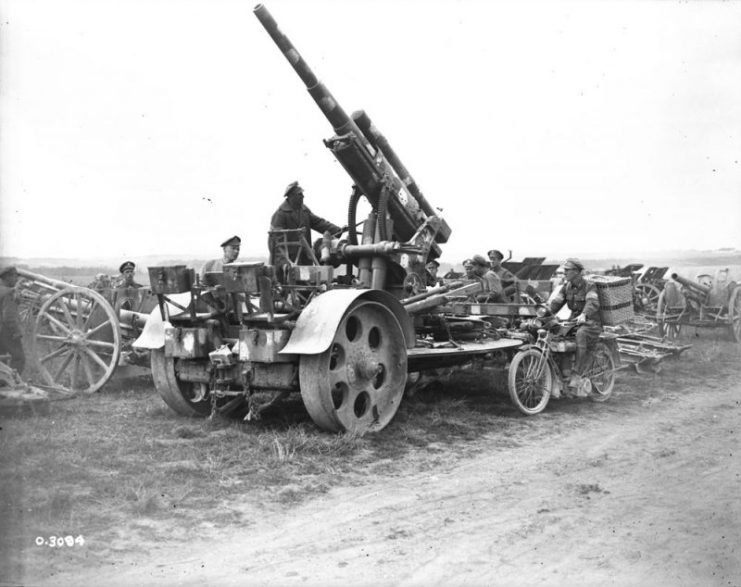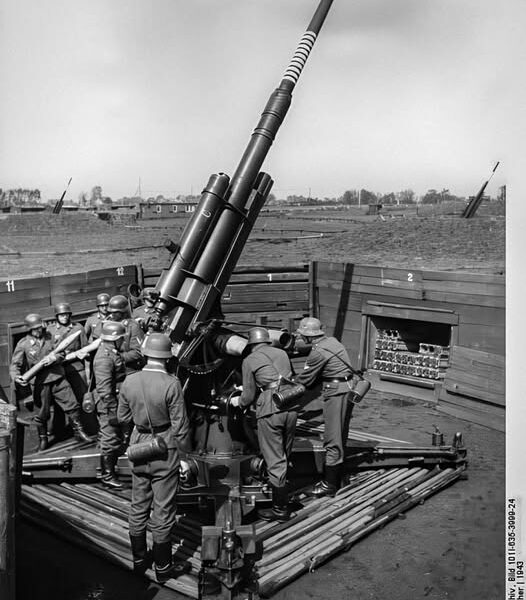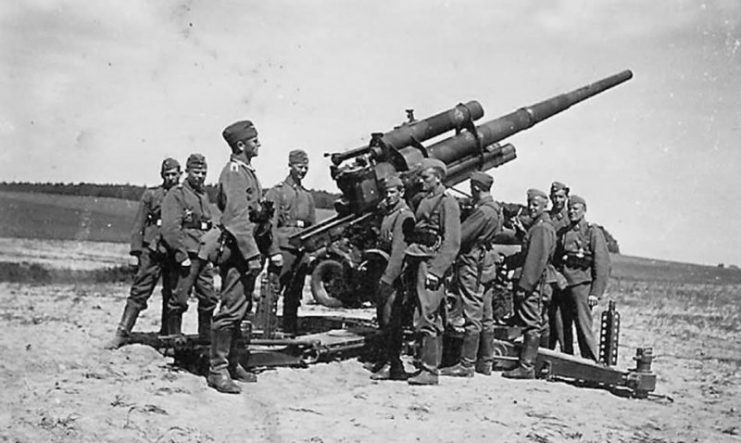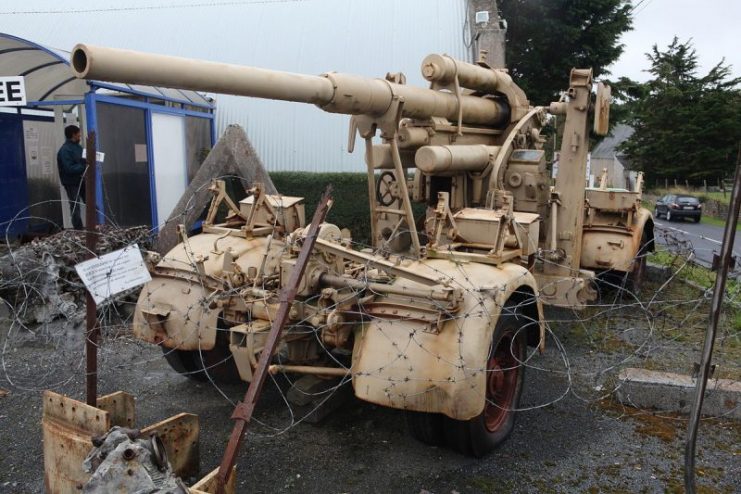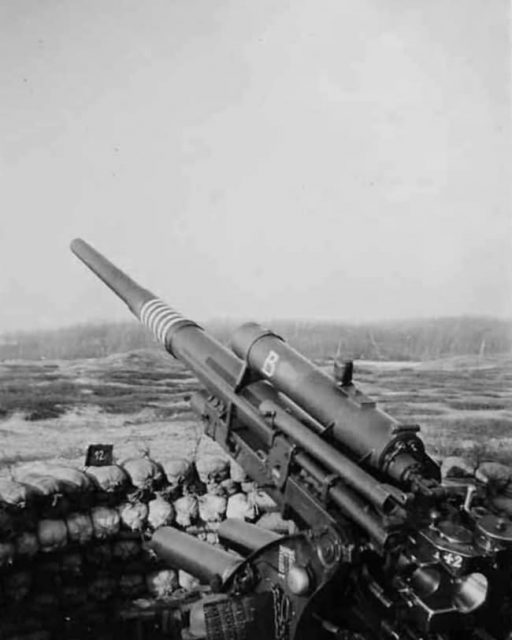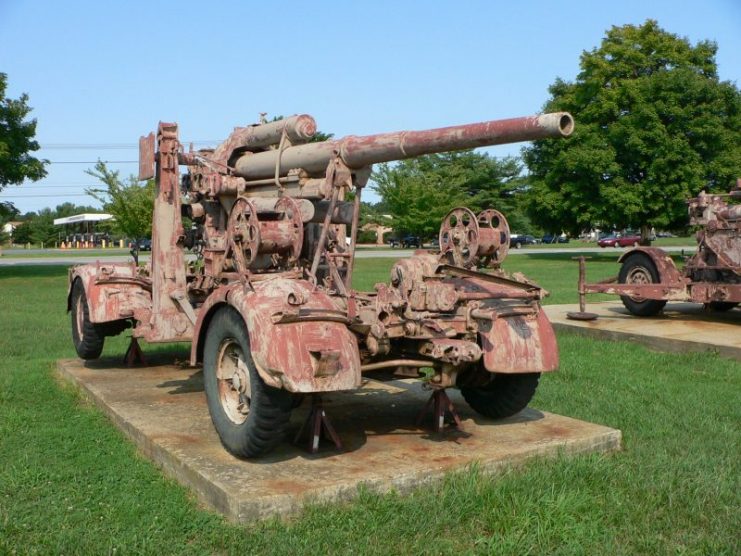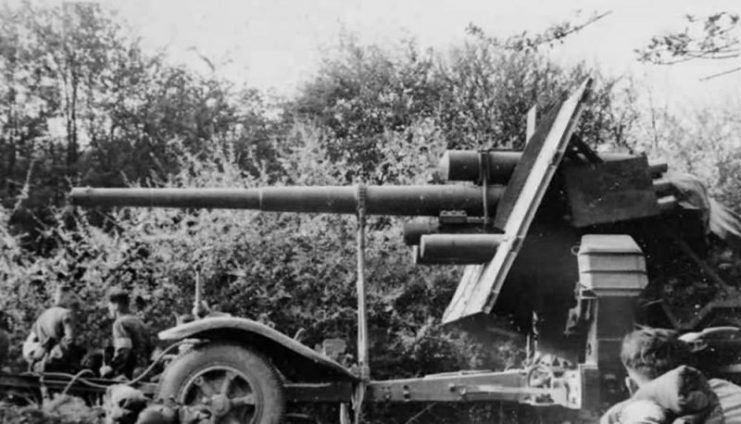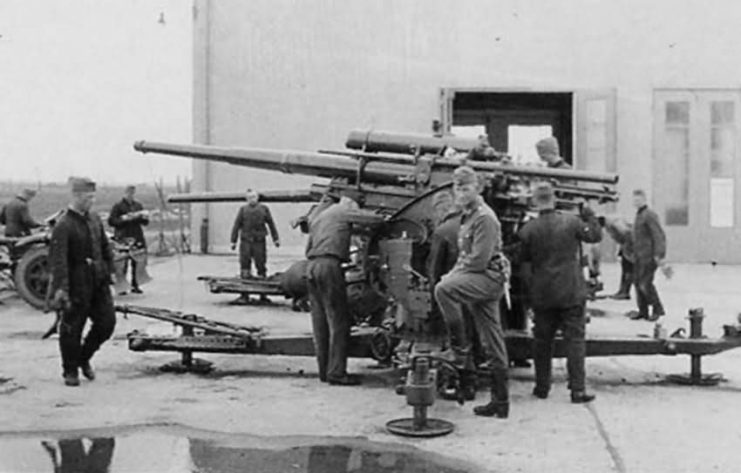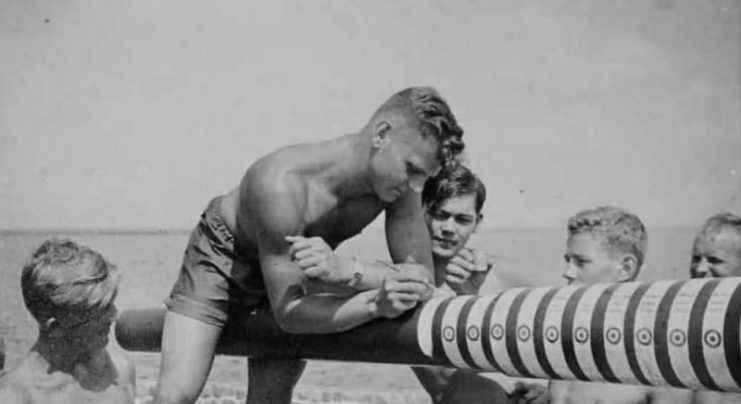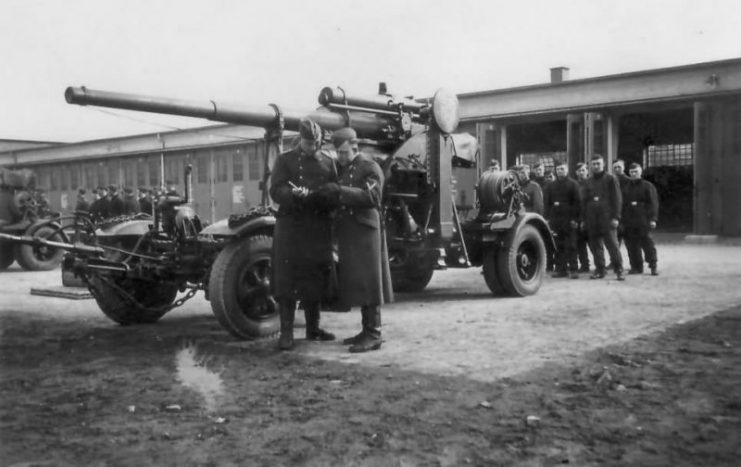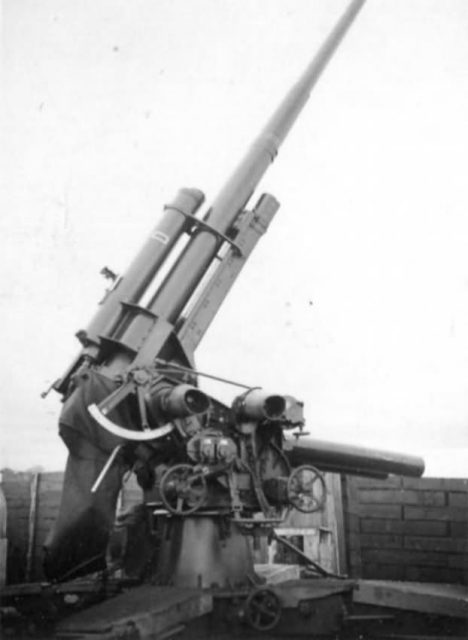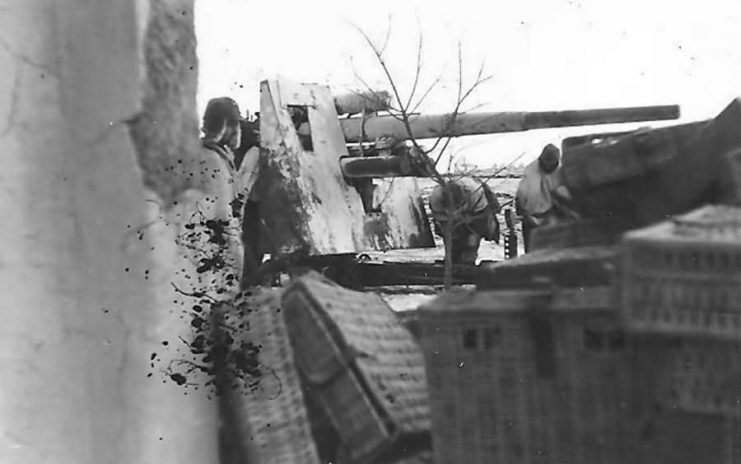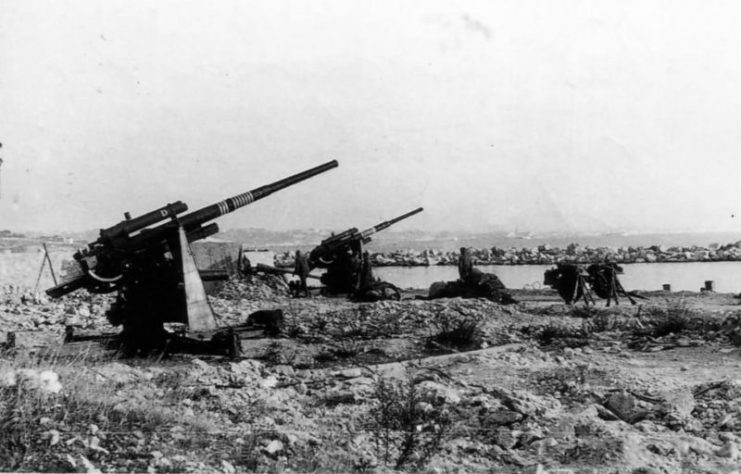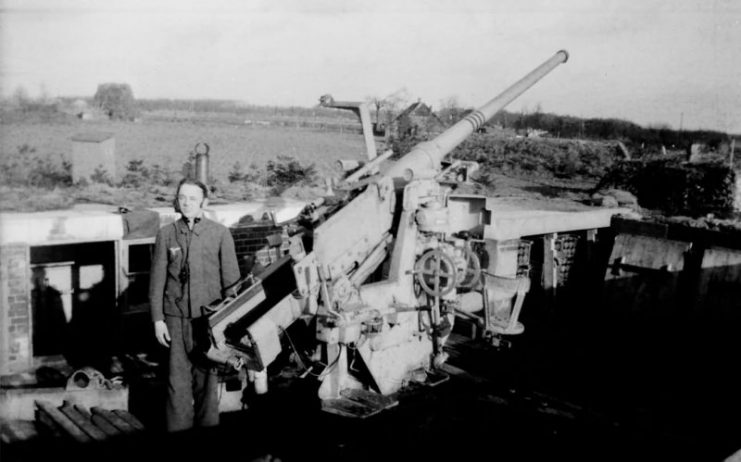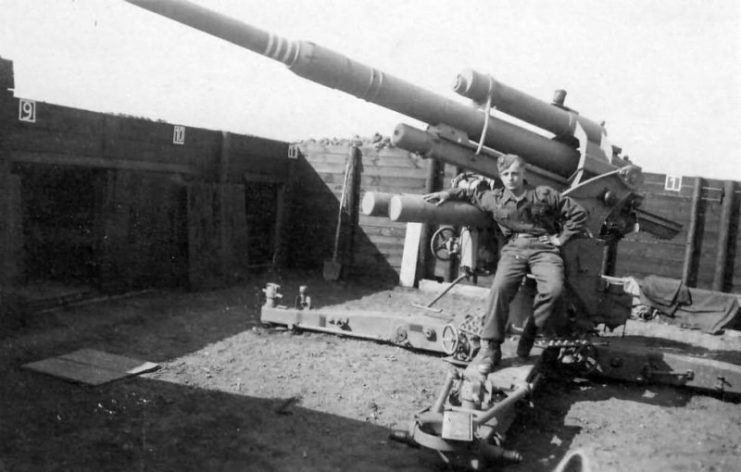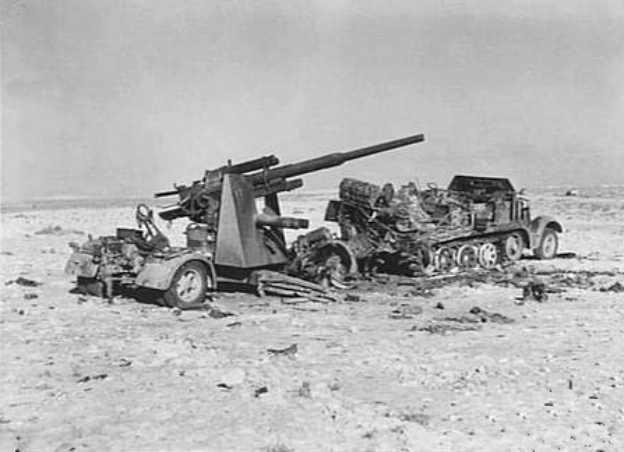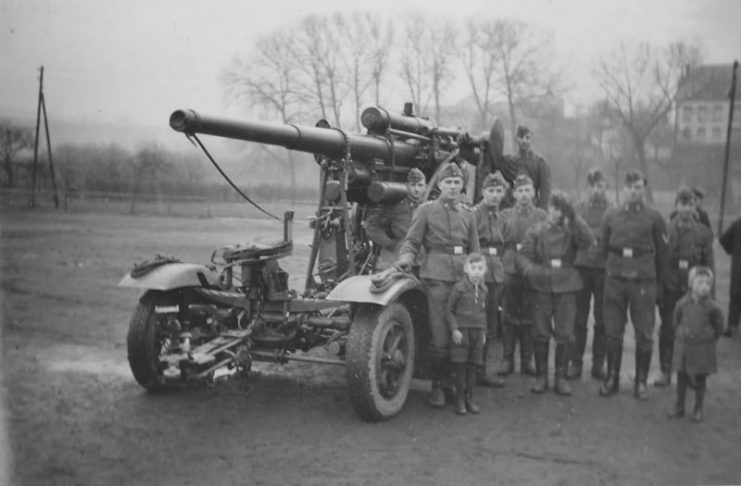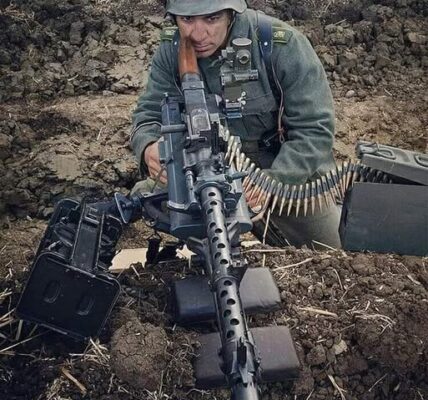The predecessor of this legendary weapon was manufactured by Krupp during World War I under the designation 8.8 cm Flak 16. As one of the first purpose-built anti-aircraft guns, it quickly demonstrated success in combating the flood of newly developed aircraft conquering the skies over Europe. However, the German Reich suffered a crushing defeat, leading to drastic military budget cuts.
Although the Treaty of Versailles prohibited the German military from producing such heavy weapons during the interwar period, the 88 series was continually improved and developed. The semi-automatic loading system facilitated handling, as the grenades were ejected via levers, and the loader inserted the second grenade.
The trick to creating a functional anti-aircraft gun, however, was achieving a high muzzle velocity while firing heavy projectiles high into the air. This was the key feature of every Flak 88 model—from its introduction in 1917 to the late World War II versions adapted for heavy tanks and tank destroyers such as the Tiger and Jagdpanther.
After the Nazis seized power in 1933, mass production of the 8.8 cm Flak 18 began. Improved versions followed in 1936, 1937, and finally in 1941. The 8.8 cm Flak 41 became a symbol of air defense in Nazi Germany, as its powerful 9.4 kg shell could shoot down Allied bombers and fighters at altitudes of over 8,000 meters.
When the Wehrmacht realized the enormous firepower of the 88 caliber, projects were launched to create an anti-tank gun called the 8.8 cm PaK 43, which was to be mounted on tanks. Besides its impenetrable armor, the 88 caliber gun, designated the 8.8 cm KwK 36 and later the KwK 43, was the main advantage that made the Tiger tanks so feared by Allied soldiers.
Although its primary purpose was to repel invading bombers from high altitude using high-explosive ammunition, the 88 Caliber was devastating on the ground when equipped with armor-piercing shells and a variety of anti-tank projectiles.
Their successful operational history is perhaps best described in the words of an American historian and World War II veteran. Paul Fussell wrote that American troops knew that the most powerful weapon of the war, aside from the atomic bomb, was the German 88mm flat-track gun, which brought down thousands of bombers and tens of thousands of soldiers. The Allies had nothing comparable.
